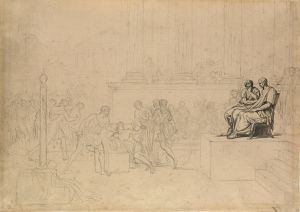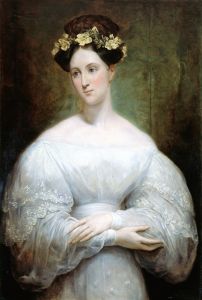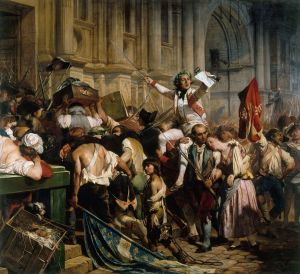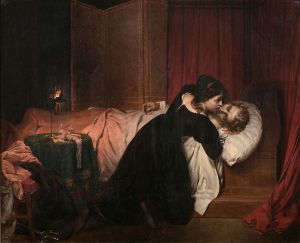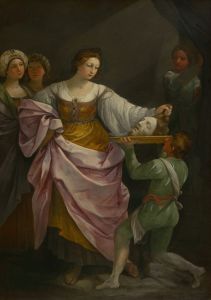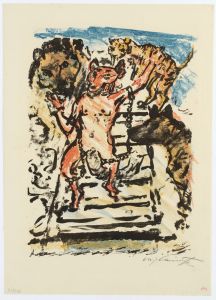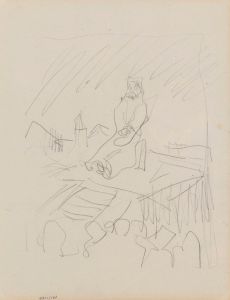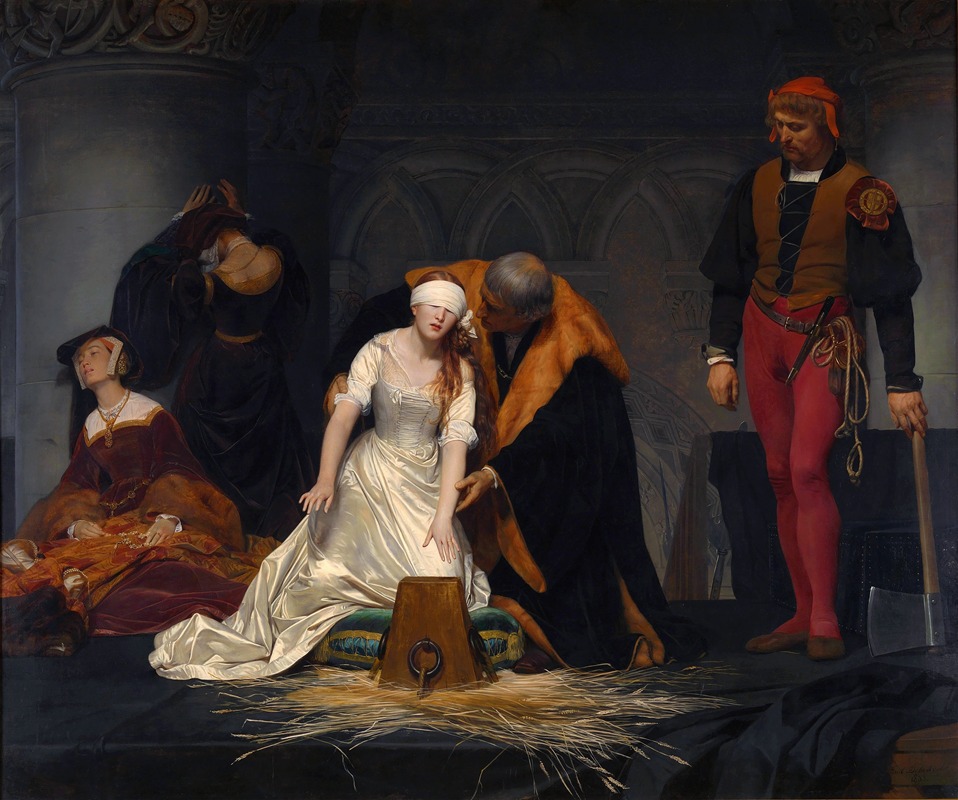
The execution of Lady Jane Grey in the Tower of London in the year 1554
A hand-painted replica of Paul Delaroche’s masterpiece The execution of Lady Jane Grey in the Tower of London in the year 1554, meticulously crafted by professional artists to capture the true essence of the original. Each piece is created with museum-quality canvas and rare mineral pigments, carefully painted by experienced artists with delicate brushstrokes and rich, layered colors to perfectly recreate the texture of the original artwork. Unlike machine-printed reproductions, this hand-painted version brings the painting to life, infused with the artist’s emotions and skill in every stroke. Whether for personal collection or home decoration, it instantly elevates the artistic atmosphere of any space.
Paul Delaroche's painting "The Execution of Lady Jane Grey" is a significant work of art that captures a poignant moment in English history. Painted in 1833, this oil on canvas artwork is housed in the National Gallery in London. It depicts the tragic execution of Lady Jane Grey, who was Queen of England for just nine days in 1553 before being deposed and later executed in 1554.
Lady Jane Grey, often referred to as the "Nine Days' Queen," was a great-granddaughter of Henry VII. Her brief reign was the result of political maneuvering following the death of Edward VI, who sought to prevent the Catholic Mary Tudor from ascending the throne. Jane was proclaimed queen due to her Protestant faith and her familial connections, but her rule was quickly challenged by Mary Tudor's supporters. Mary, the rightful heir according to Henry VIII's will, successfully claimed the throne, and Jane was imprisoned in the Tower of London.
Delaroche's painting focuses on the moment of Jane's execution, emphasizing the emotional and human aspects of the event. The composition is carefully arranged to draw the viewer's attention to Jane, who is depicted as a young, innocent figure dressed in white, symbolizing purity and martyrdom. She is blindfolded and kneeling, reaching out to find the execution block. Her delicate and vulnerable portrayal contrasts with the somber, dark tones of the surrounding figures and setting.
The executioner stands to the side, his face partially obscured, adding to the tension and gravity of the scene. Two attendants are present, one of whom is assisting Jane, while the other appears to be in mourning. The setting within the Tower of London is depicted with a stark simplicity, focusing the viewer's attention on the figures and their emotional states rather than on elaborate architectural details.
Delaroche's work is noted for its dramatic realism and emotional depth, characteristics that were highly appreciated in the 19th century. The painting reflects the Romantic era's fascination with historical subjects and the exploration of human emotion. Delaroche's meticulous attention to detail and his ability to convey the tragic nature of the event have made this painting one of his most celebrated works.
The painting's historical accuracy, while compelling, is not without artistic interpretation. Delaroche took some liberties in his depiction, as is common in historical paintings, to enhance the emotional impact. Despite these artistic choices, the painting remains a powerful representation of Lady Jane Grey's story and her tragic fate.
"The Execution of Lady Jane Grey" continues to be a popular and influential piece, drawing viewers who are interested in both its artistic merit and its historical subject matter. It serves as a poignant reminder of the turbulent times in which Lady Jane lived and the personal tragedies that often accompanied political power struggles in Tudor England.





